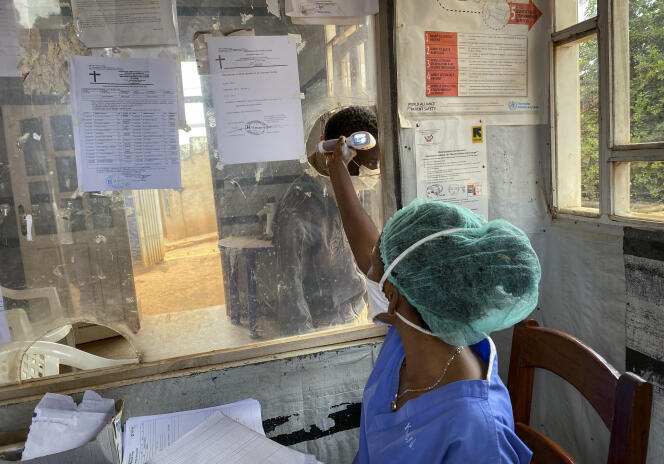
A few days apart, cases of Ebola virus infection reappeared in the Democratic Republic of Congo (DRC) and Guinea. On February 3, a 40-year-old farmer died at Matanda Hospital in Butembo in North Kivu, one of the eastern provinces of the DRC. She had presented a few days earlier to the Biena health center, a village 90 km away, before being transported to check the origin of persistent bleeding signs. Three other people, one of whom died, also tested positive. In Guinea, the first known victim is a nurse who died on January 28 in Gouecké, a town located in a forest area more than 800 km east of the capital, Conakry. In total, at least eight people, all belonging to his family, were also infected, according to the National Health Security Agency. Three died.
If these two countries are several thousand kilometers apart, excluding a priori any link between these concomitant events, this return of Ebola, a virus that causes a sudden fever, headaches, vomiting and diarrhea, locally arouses the same fears. . In 2013, Guinea was the starting point of an epidemic outbreak that quickly spread to neighboring Sierra Leone and Liberia. Three years were needed to overcome it, and 11,300 people died (out of 28,600 recorded cases), the heaviest toll recorded for this virus originating in Central Africa and discovered by scientists in the mid-1970s.
Specter of another crisis
For its part, the DRC had just a few weeks ago – on November 18 – to declare the end of its 11e epidemic. There too, the gravity of the situation, with more than 2,200 deaths, had justified the World Health Organization (WHO) declaring, a year and a half earlier, the country in a global health emergency.
While the means available in these low-income countries have already largely been mobilized to deal with the Covid-19 pandemic, the specter of another health crisis has led governments to call without delay the WHO for reinforcement.
In the province of North Kivu, an Ebola care center has been reactivated in Butembo and the search for contact cases has started. Almost 300 have already been identified. The WHO announced Monday February 15 that it had started as a priority vaccination of the most exposed health workers. “A thousand doses were sent to Butembo. They must be injected within ten days because, like the Pfizer-BioNTech vaccine against Sars-CoV-2, the serum produced by Merck can be stored at – 80 ° C. No city structure can guarantee such temperatures, explains Jean Metenier, head of the Unicef office in Goma, which provides logistics in responding to health emergencies. The stocks of personal protection and disinfection equipment kept since the last epidemic will be distributed. “ The presence of armed groups, however, makes the deployment of medical teams difficult. The village of Biena is under the control of Mai Mai militias with which NGOs and representatives of international institutions must negotiate their right of access.
Sequencing in progress
In Guinea, the response is also being organized and a first emergency humanitarian flight took off Monday for Nzérékoré where the intervention teams will be gathered.
In both countries, samples taken from the first patients are being sequenced to determine whether it is the most common strain of the so-called Zaire virus or a variant. It is too early to explain the reasons for the resurgence of this highly fatal hemorrhagic fever. Several hypotheses exist. “The most probable is linked to a new interaction between humans and bats, which we know to be the host reservoir of the virus, explains immunologist Aurélie Wiedemann, from the Vaccine Research Institute (Paris). Or with another carrier animal such as the chimpanzee. “
The persistence of the virus in recovered individuals could offer another lead. Several studies, including one conducted by Mme Wiedemann on Ebola survivors after the 2013 epidemic in Guinea, showed that the presence of the virus was detectable in bodily fluids including semen up to 40 months after recovery. Could it then be that the virus becomes active again after being put to sleep? Be that as it may, the immediate urgency is to control all the risks of further propagation.
–


